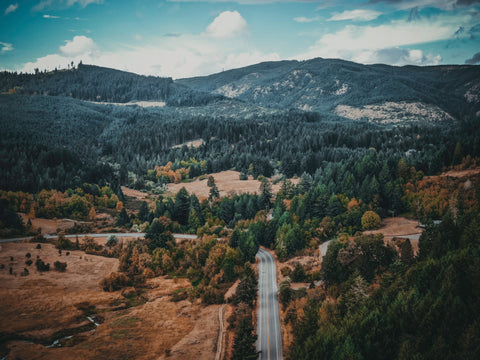Step One, dream.
When you are considering a van conversion, that is altering a raw empty panel van and transforming it into a tiny mobile house, the importance of dual purpose or function are essential from those who have dared to convert before! So on to trawling thousands of inspirational YouTube videos and reading conversion books. The trick is not only to cram everything that you may need neatly and elegantly into the space but also to create a home environment that is functional and practical for your personal needs. With space at a minimum and comfort and functionality as a necessity careful planning and designing is called for. The requirement for tech and power is something us house dwelling people take for granted. Kings and Queens of days gone past have not experienced the level of comfort we enjoy these days. For those who love to dream on a budget there are many ideas that you may have which might appear to be out of your reach, and yet, with a little ingenuity and preparedness your challenge awaits!  Creating your own bespoke van means that you can satisfy your own needs instead of the factory made campervans that are often old fashioned and dull, they may be practical and ready to go, but not cool looking. They are often extremely expensive as well and may not offer everything you would get in a tailored conversion. In order to spread the cost you may have to purchase on a finance deal, adding further costs. They also generally offer up very low power and install the smallest and cheapest leisure batteries and inverters, meaning you have to plug in at camp sites to charge them up and cannot go off-grid wild camping. Not all camp grounds are beautiful and some can get very busy. If you want seclusion then perhaps hooking up at a campsite is not an option. Along with failing electrical components you may also find issues with deteriorated insulation, mould, old engines failing, high running costs and a whole host of other issues from modifications that have been installed prior to the initial manufacturers build. Manufactured camper vans are very expensive compared to empty vans plus the components that you can put in them. Creating an option to suit your own circumstances and personal preference is by far the most important gain in designing your own van and can be done in stages, spreading the cost.
Creating your own bespoke van means that you can satisfy your own needs instead of the factory made campervans that are often old fashioned and dull, they may be practical and ready to go, but not cool looking. They are often extremely expensive as well and may not offer everything you would get in a tailored conversion. In order to spread the cost you may have to purchase on a finance deal, adding further costs. They also generally offer up very low power and install the smallest and cheapest leisure batteries and inverters, meaning you have to plug in at camp sites to charge them up and cannot go off-grid wild camping. Not all camp grounds are beautiful and some can get very busy. If you want seclusion then perhaps hooking up at a campsite is not an option. Along with failing electrical components you may also find issues with deteriorated insulation, mould, old engines failing, high running costs and a whole host of other issues from modifications that have been installed prior to the initial manufacturers build. Manufactured camper vans are very expensive compared to empty vans plus the components that you can put in them. Creating an option to suit your own circumstances and personal preference is by far the most important gain in designing your own van and can be done in stages, spreading the cost.
Step Two, which van?
Inevitably there are many questions and which van is usually the first. You may skip this step if you already have the van, although sometimes you may realise that the van you have will not actually be right for you. In which case it may be best to change this now, or you may be putting a whole load of money and effort into something that doesn’t work for you.
Go too big and you may not be able to go were you want. It’ll be too late to consider when you come up against restrictions in small narrow lanes in the Cotswolds for example, or parking issues in small villages and some towns, because of restricted height in car parks. Too small and you can’t have everything you want in it. They’ll be no space internally for a shower or even simply standing up! Some people get around these issues by simply being short, or having everything within arms reach, being unashamed at the intimate space together and or camping with an awning tent outside adjoining the van which offers extra space to stretch and dress.
The satnav that we recommend gets around the issues of a larger van and the routes to take to avoid narrow lanes scratching the sides of the van, or low bridges and tiny country lanes built for horses and carts.
https://camperandmarine.com/collections/camper-sat-nav-accessories/products/avtex-tourerthee-plus
For smaller van conversions we recommend the VW transporter. The dimensions of which mean, unless you opt for a fixed raised roof, that you can easily fit into any average car space or multi storey car park. A great number of people now use VW’s as a day van, and use this vehicle in place of their car. When your budget only stretches to one vehicle a small van is the best option.
When planning how much you need to live comfortably i.e. how big a space you need then asking which van needs to be mutually considered. If you are not an avid top gear fan, there are surveys to look out for that highlight the most reliable vans and the best ones for conversions. Based on your answers to that you may decide what van. Whether or not you are knowledgeable about such matters you can hire a vehicle inspector, which for a fee of around £100 they can provide a detailed analysis for you.
https://www.rac.co.uk/buying-a-car/vehicle-inspections
This small investment may help you to negotiate a better price and certainly prevent you from buying something that will cost thousands to repair. Or you could consider just doing a simple online history report using the vehicles registration plate with the vehicle check free with the DVLA, https://www.gov.uk/get-vehicle-information-from-dvla
or if you are with the RAC or AA they offer discounted rates to check vehicles that you find. Alternatively, there are many other independent companies out there to assist with this important step.
If you think you’d rather have a little more space than a small van offers but still like the idea of fitting into a regular sized parking space then a Medium-Wheel-Base Ford Transit is a very popular option. MWB Sprinters and VW Crafters offer just enough space to cram in everything you may need. Swivel seats which may mean you have to forgo the bulkhead cupboard will open up the van. Pop top roof or high top allows more room for a second double bed or simply more storage. You may even squeeze in a toilet and shower area, although many people opt for showering outside, or at camp sites or gyms and store the porta loo inside a cupboard.
If you wish to spread out a bit or need a large garage area, for storing motor bikes or climbing equipment then a Long-Wheel-Base vans such as a Mercedes Sprinter or VW Crafter offers excellent road handling and with it’s sloping sides may squeeze along narrow tree lined roads.
The Fiat Ducato box shape means easier woodworking skills are required if you are to kit your van out with over head lockers. You may choose to create a bulkhead cupboard in a LWB van and build a wall, or put in a door to the front seats. This partition creates a more cosy & homely feel and better temperature regulation. In cool climates it will be warmer as it is more insulated by simply cutting down the loss of heat through the front windows. In hotter climates this is required particularly necessary as the windows act like a greenhouse and even a fan will struggle to keep things cool in the whole van. If you’re planning on stealth camping in a city or just don’t want to disturb anyone, a screen between the front and back of the van is a functional necessity to prevent any light or movement from inside.
Step Three, Plan your design.
This is the fun part write a comprehensive list, draw designs, measure, plan and budget! Budget guidance is the most asked question we have at our workshop. However the answers vary wildly dependant on whether you are self building, on your individual needs and the cost of the van. Endeavour always to purchase a van with as low mileage as possible, as no doubt you will want to add to this adventuring. Building a tiny house requires wide-ranging skills but you don’t need to do all it yourself. Installing windows is ironically a relatively easy task as is cutting holes in the van for rooflights and fans but people do find this most daunting. Planning is essential. People will do certain jobs then find they can’t complete others, like filling the roof with vents, and realising there is now not enough roof space for as much solar as they would like. Factor in all aspects and plan ahead.
 Ordering the parts that you need may take longer than anticipated, as many items are only available on back order or you may find you need to book into a professional workshop and there is a waiting list. Quite rightly people are the most nervous about the power system. This is the most expensive part of the build and requires careful planning. We find that people often start, but rip it out and have to start again! They get stuck when things don’t work. Installation when you know how is relatively simple but can take time. The overall conversion may take up to 1000 hours, and depending on your needs from £3000 to £20,000 or more but will be extremely fulfilling to be able to say, I built this!
Ordering the parts that you need may take longer than anticipated, as many items are only available on back order or you may find you need to book into a professional workshop and there is a waiting list. Quite rightly people are the most nervous about the power system. This is the most expensive part of the build and requires careful planning. We find that people often start, but rip it out and have to start again! They get stuck when things don’t work. Installation when you know how is relatively simple but can take time. The overall conversion may take up to 1000 hours, and depending on your needs from £3000 to £20,000 or more but will be extremely fulfilling to be able to say, I built this!
Conclusion:
 Start by list writing lists. Writing comprehensive lists will help plan out your needs for your van conversion and allow for compromises if you need to. What you can do yourself and which aspects you will need to purchase in advance, or find someone to help with. The important thing is to start. Even if you don’t know the order that you will be able to achieve your personalised van project, with every step just keep asking yourself these questions. What do I want in that space? What do I need in that space? Where do I want to go? As daunting and exciting and as unaffordable this may seem, every journey begins with one step! You can modify your preferences later before you start on the build. Anything is possible, it is just whether you have the finances to achieve it. It may help to divide the list up into areas of the van, for example, garage, bedroom, kitchen, bathroom, and living room. So, for example here are some things you may want to include on your list;
Start by list writing lists. Writing comprehensive lists will help plan out your needs for your van conversion and allow for compromises if you need to. What you can do yourself and which aspects you will need to purchase in advance, or find someone to help with. The important thing is to start. Even if you don’t know the order that you will be able to achieve your personalised van project, with every step just keep asking yourself these questions. What do I want in that space? What do I need in that space? Where do I want to go? As daunting and exciting and as unaffordable this may seem, every journey begins with one step! You can modify your preferences later before you start on the build. Anything is possible, it is just whether you have the finances to achieve it. It may help to divide the list up into areas of the van, for example, garage, bedroom, kitchen, bathroom, and living room. So, for example here are some things you may want to include on your list;
- Internet – Wifi
- Dimmable mood lighting
- A comfortable fixed bed, as you don’t want to make the bed every day
- Bedside tables with charging points
- Wardrobe area for hanging clothes
- A laundry area
- Reversing camera
- Charging points for iPad and mobile phones
- Seating for two
- Quiet diesel heater, for winter use
- Inverter for powering devices such as an air fryer or toaster
- Drinking water on tap
- Versatile lagun mounted table
- Underslung water tanks, to allow more space inside the van and convenience filling
- Flushing toilet
- Hot water shower
- Storage space for folding bikes
- Fly screen for doorway
- Roof rack for kayaks
- Detachable awning for extra outdoor space
Hopefully this has helped you take a step forward towards building your dream hotel room on wheels! Just remember to plan as fully as you can and ask for help when you need it.


